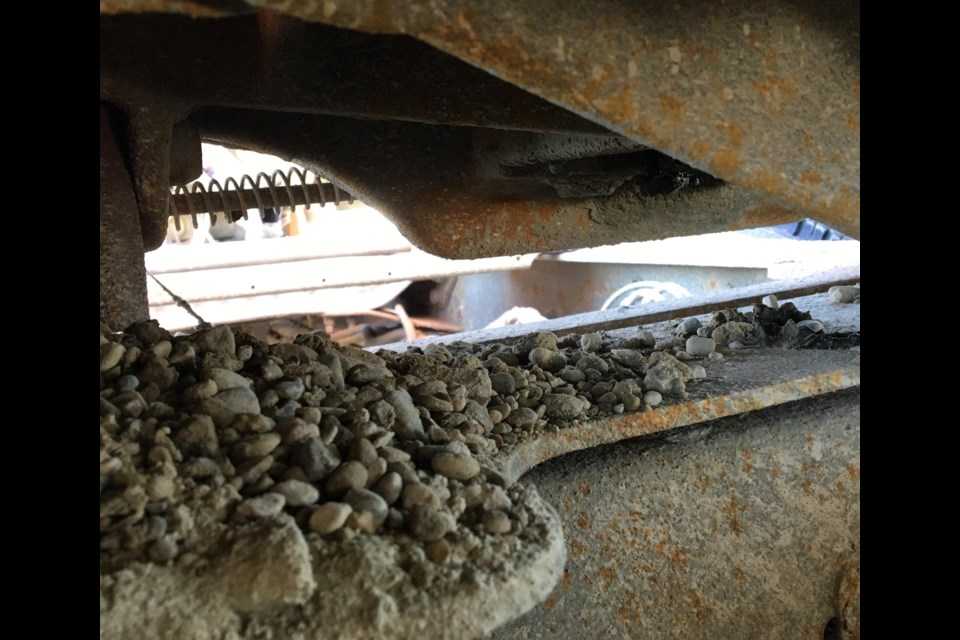MTO's Commercial Vehicle Enforcement program thinks it can provide part of the answer. This may be one of the issues, substantial aggregate debris was found on this tractor frame. (See photo gallery)
They issued a tweet, pointing out that dirty transports can carry gravel on their substructure which is then spread on roadways.
Ever wonder why so many windshields need to be replaced every year? This may be one of the issues, Substantial aggregate debris was found on this tractor frame. pic.twitter.com/Vw8GnIi3X2
— Enforcement Supervisor Baptiste (@Handell_CVE) May 4, 2023
Road gravel can chip windshields when it gets kicked up by the tires of other vehicles and flies through the air, striking the windshield of a car. As a car drives over gravel, some of the loose stones on the surface of the road become dislodged and get propelled into the air by the car's tires, often reaching high speeds.
These stones can then collide with the windshield of another vehicle, causing a small chip or crack in the glass. The size and severity of the damage will depend on the speed of the car, the size and shape of the rock, and the angle of impact.
This phenomenon is especially common on unpaved or poorly-maintained roads, where loose gravel and stones are more likely to be present on the surface. Gravel roads can cause the most damage to windshields, but even on paved roads, gravel can accumulate in areas where construction or repair work has taken place, washouts or left by other vehicles.
The problem is exacerbated when vehicles drive too fast, as this increases the likelihood of gravel being kicked up and striking the windshield of the car behind. Additionally, large vehicles such as trucks and buses are more likely to cause damage to windshields due to their size and weight, and the higher speeds they typically travel at.
It's important to note that even a small chip in a windshield can be dangerous, as it can compromise the structural integrity of the glass and make it more susceptible to cracking or shattering. This can be especially hazardous in the event of an accident, where a compromised windshield can fail to provide the necessary protection for passengers.
To minimize the risk of windshield damage from road gravel, drivers should avoid following other vehicles too closely, especially on unpaved or gravel roads. Additionally, reducing speed can help to minimize the amount of gravel that is kicked up by the tires, reducing the likelihood of chips and cracks. Windshield protection film or covers can also help to minimize damage from small rocks and gravel.
